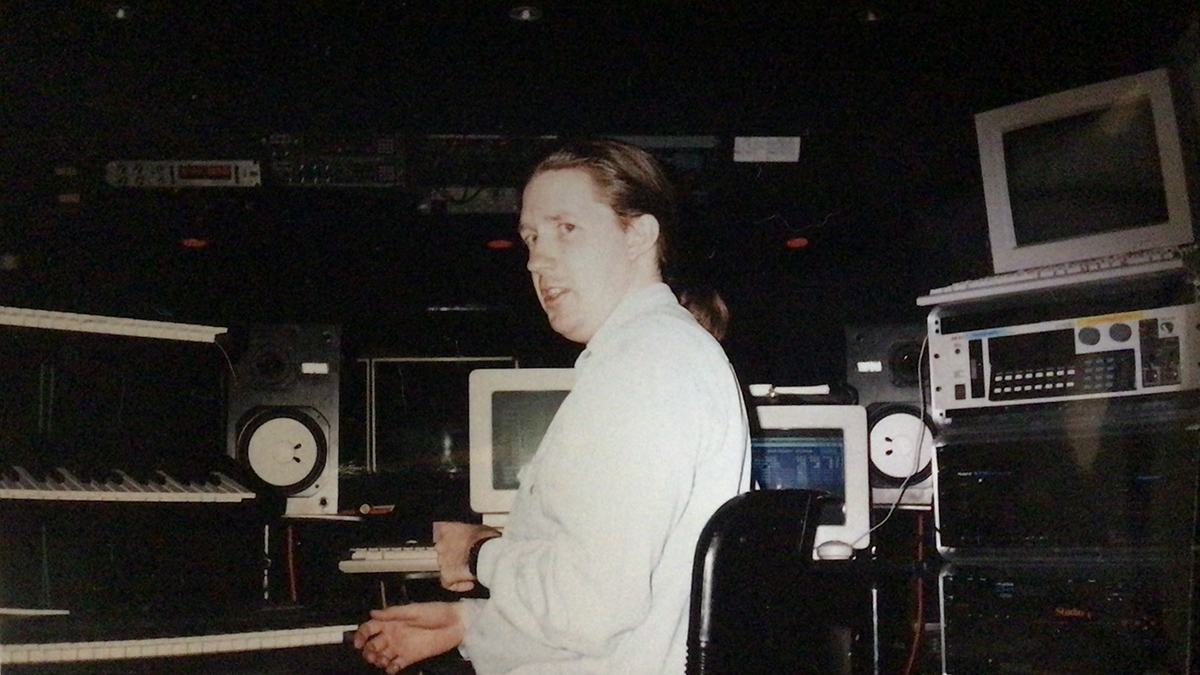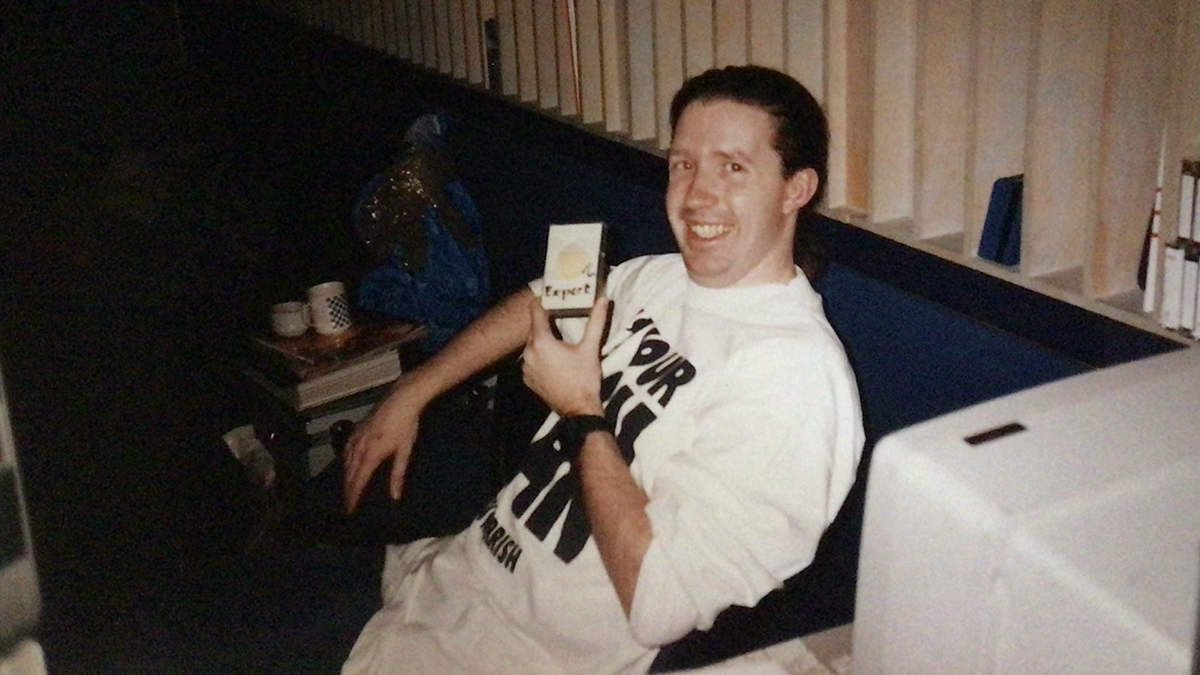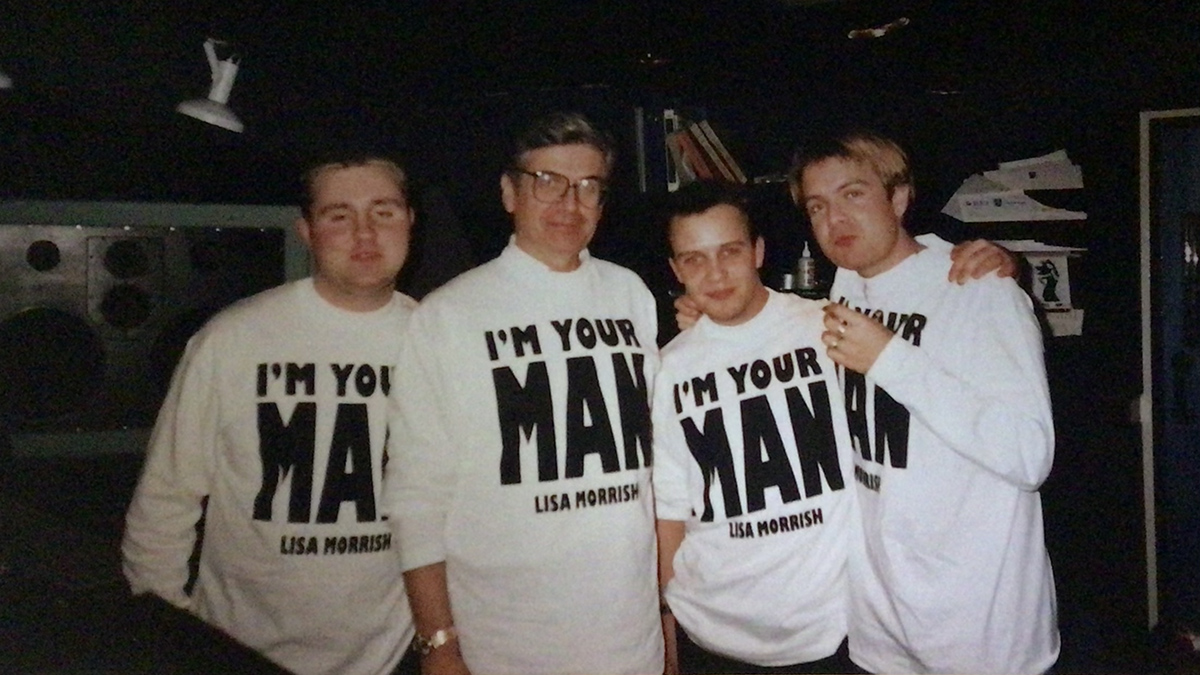How we made Fastlove with George Michael: “He was the only artist we ever worked with who absolutely refused to have his vocals pitch-corrected”
Best of 2022: As Sony prepares a special deluxe commemorative reissue of George Michael’s Older, our writer Dave Clews revisits his own contribution to the creation of this classic ‘90s album…
Join us for our traditional look back at the stories and features that hit the spot in 2022
Best of 2022: In the spring of 1995, I was five years into my career as a freelance recording engineer, programmer and keyboard player. I’d been lucky enough to form a working partnership with songwriter and producer Johnny Douglas (hereafter known as ‘JD’) through engineering a lot of his song demos in the basement studios at his publishing company, Rondor Music, in Parsons Green, London.
JD had written and produced a brilliant bunch of songs for a new artist called Lisa Moorish, who ended up signing an album deal with Go!Discs on the back of the demos we’d recorded at Rondor.
So we set up camp in Studio 4 at West London’s famous SARM West studios to record what became Lisa’s I’ve Gotta Have It All album. Meanwhile, George Michael’s team had been holed up downstairs in Studio 2 for some time already, working on the Older album.
What follows is the story of how this fortuitous alignment of the planets resulted in our becoming involved in the production of one of the most iconic albums of the 1990s, and one well-loved track in particular - Fastlove Pt.1.

Wouldn’t it be great if…
The idea to do a cover of Wham! hit I’m Your Man had come from Lisa herself, with full record label approval - what better marketing ploy than to get a huge artist like George guesting on a debut artist’s first single? But how could we get him to agree to sing on it? We knew that George was recording in the same building as us, but had only glimpsed him fleetingly so far.
So JD got a load of T-shirts printed up with ‘I’M YOUR MAN’ in the style of Wham!’s iconic ‘CHOOSE LIFE’ shirts and persuaded everyone from the tape-ops and engineers to the backing vocalists - even the string arranger - to wear one around the building.
Get the MusicRadar Newsletter
Want all the hottest music and gear news, reviews, deals, features and more, direct to your inbox? Sign up here.
“It was the T-Shirts,” he recalls. “And then me kinda getting everyone to wear one, that made George go ‘WTF’s going on ‘ere?’ And then he just came into our control room. We were all just working on something and it was like - record scratch - we look over to the left and it’s like 'Holy Shit! It’s George Michael!'”

Luckily, George loved the sound of the tracks on Lisa’s album, and would come up most nights to hang out and listen to what we were doing. He himself suggested singing on the I’m Your Man cover in the end, after which he left the room to go home, and JD and I just looked at each other.
There was a big sofa at the back of the Studio 4 control room, and we just started jumping up and down on it in gleeful celebration. Unfortunately, while we were jumping around punching the air, the control room door swung open and George slipped back in and said ’Did I leave my keys in here?’, and we were both sort of frozen in mid leap on the sofa!
George obviously didn’t mind too much, as he not only recorded backing vocals on I’m Your Man, but also sang the entire second verse, and it wasn’t long before he’d asked JD to co-produce some tracks for the Older album, starting with Fastlove. Cue another sofa-jumping celebration! Little did we know it was to prove an epic four-month odyssey that would feature musical puzzles, technical challenges and creative curveballs aplenty.

Not so fast, love
George was a great guy to hang out with - incredibly funny, full of great stories, remarkably humble and very generous - but as an artist to work with, his almost obsessive perfectionism could sometimes be infuriating.
We’d often spend weeks on a backing track, crafting and tweaking to get it sounding epic, only for him to come in one day, change his mind and tear everything down to start again almost from scratch.
Similarly, he would spend days working on a vocal, booting everybody out of the control room and dropping himself into record with the Otari RADAR controller next to him in the booth, building up a fantastic performance line by line. Then, just as we’d got to really love it, he’d go in and record new versions over the top, erasing forever the original parts we’d come to love.
George was a great guy to hang out with... but as an artist to work with, his almost obsessive perfectionism could sometimes be infuriating.
One such curveball he threw at us was the time he came in and announced that he wanted to change the ending of Fastlove by segueing into a section inspired by Patrice Rushen’s Forget Me Nots towards the end of the song. We’d been working on the song painstakingly for weeks and thought it was done, so the thought of breaking it in half and adding a brand new outro section was torture.
In the end, JD kept the drums more or less the same, adding an extra four-bar breakdown section on the MPC with the scratch sample in it to create the link, but it was getting the transition to work, fusing the two pieces of music together in a musically coherent way, that took us about another two weeks to work out to everyone’s satisfaction.
“I mean, when he said he wanted to go into Forget Me Nots, I couldn’t understand what he was on about at first,” JD recalls. “We thought it was finished, and then he came in and trashed it with that idea. I was a bit gutted! I thought, ‘you’re trashing it, WTF! Please let me finish this record!’. But it kinda taught me to craft away and to work on stuff and if you think of an idea don’t just go, ‘oh, I can’t be arsed’.
It’s probably one of the biggest lessons I learned from the George stuff, that even if you think it’s done, if there’s something niggling you or if there’s something that doesn’t quite feel right, go and fix it. Don’t just go, ‘oh fuck it, it’ll be alright’. Which has then brought out this massive thing in me of ‘we can take months on one record’, but yeah, it was four months - it was a long time.”
Firstlove
When we first heard the early, work-in-progress version of Fastlove, it had a laid back, Latin vibe with a Bossa Nova rhythm. The only things we kept from it were the vocals for the first part of the song - which George ended up re-recording most of later on - and Andy Hamilton’s now-iconic saxophone parts. So JD and I set about creating a new backing track to fit the vocals and sax we already had.
All the drums, sound effects, orchestral stabs and scratches were programmed by JD on his Akai MPC3000, which is why the rhythm track has that great swing feel. We had the MPC synced up by MIDI clock to my computer, from which all the keyboard parts, including the bass, were sequenced.
All the drums, sound effects, orchestral stabs and scratches were programmed on an Akai MPC3000, which is why the rhythm track has that great swing feel.
Throughout Lisa’s album I’d been running Cubase on a rented Atari MegaST, which was rock solid, but at the start of working on George’s stuff I’d acquired a new Apple Powermac 7100, complete with AudioMediaIII card, a huge (at the time) 1GB external hard drive that resembled a Greek temple, and an early version of Cubase Audio XT. Safe to say it was not a smooth transition!
The first thing I ever tried to capture using hard disk recording on the new Mac was Andy Hamilton’s original sax parts for Fastlove. We wanted to be able to run them live from the computer while programming around them, something that would be simple nowadays. However, the computer just wasn’t fast enough to handle the data transfer rate for real-time audio playback from disk, so we went back to syncing everything to two Sony digital 24-track tape machines linked together with the vocals and sax on, and just used the Mac for MIDI sequencing from then on.
Establishing a bassline
People often mistakenly think that the bass on Fastlove is a real bass guitar, but in fact it’s a sampled Fender bass played by me on a keyboard, quantised with a groove template to match the MPC.
We were renting an Akai S1100 sampler at the time and the main bass sound was one that the senior engineer at Rondor Music, Pete Norris, had multisampled from a DI’d Fender bass. We’d used it a lot on Lisa’s album because it just worked and sounded very much like a real bass if you played it right.
When it came to programming the bass part, JD tells it best: “I remember when Dave played the bass, cos I remember saying to him, ‘oh, load up the bass’, and I remember thinking, ‘right, what am I gonna do for this bassline?’ Dave loaded it up and just started playing the bassline and I went ‘ah yeah, that’ll do, that’s great! Just finish it off!’
“It just kinda happened, he stood up over his Roland PC-200 MIDI controller keyboard and instantly just played it to kind of go ‘there’s the sound!’ and it just fitted perfectly, so we were like, we’ll just go with that, it sounds great! Funnily enough, people still think it’s a real bass player to this day. And when I tell them that it was an Akai sample…!”
That main bass sound is supplemented by two other sounds - a sampled downward bass slide and some overdubbed slaps and pops from the Akai factory sample library that I had on CD-ROM.
Funnily enough, people still think it’s a real bass player to this day. And when I tell them that it was an Akai sample…!
For the Forget Me Nots section, it took a lot of ninja-listening to the original Patrice Rushen record to figure out exactly how to blend three different samples together to reproduce the part. A lot of people think that section has a sample of Forget Me Nots in it, but it doesn’t - the only elements we really borrowed were the bassline and the vocal hook, all of which we redid.
There are lots of other keyboard parts on there - the organ stabs were from an E-mu Vintage Keys and the twinkly arpeggios over the outro were generated by my Korg Prophecy, which had just come out and was very trendy! The synth pads could have come from anywhere but were probably Roland JV-1080, and the glidey, sine-wave lead synth over the intro is from a rack-mounted hardware Minimoog clone by Studio Electronics called the SE-1, which we used on a lot of stuff.
The ‘gotta get up to get down’ vocal hook is JD singing through an effects unit called the Digitech Vocalist. I was heavily into any kind of electronic vocal effect at the time, and I loved this box, which was a 1U rackmount thing a bit like a hardware cross between a vocoder and Auto-Tune. You could set scale notes to quantise incoming signals to and it would give you a kind of robotic-sounding version of whatever you sang into it. It also generated humongously-wide stereo harmonies, which featured heavily on I’m Your Man, but we mostly used it in Unison mode for Fastlove, as JD recalls.
“It was hard to do, you had to sing it perfectly in tune or it would mis-quantise it. I actually still have all the ‘Gotta get up to get down’ Digitech Vocalist samples somewhere!”
Pastlove
Fastlove, the second single off the Older album, was released on 22 April 1996. It stayed at No.1 in the UK for three weeks, by which time we were all taking a well-earned holiday.
I’ll always look back incredibly fondly on my days working with George - as a young programmer and musician I felt incredibly lucky to be where we were and I learned an enormous amount over the course of Older and subsequent George projects like Outside and Patience.
As an artist and studio collaborator, George was unique. He was very uncomfortable with the idea of anybody hearing him mess up, or recording anything that wasn’t 100% perfect. He wasn’t afraid to put as much time as he felt necessary into his craft. He was also the only artist we ever worked with who absolutely refused to have his vocals pitch-corrected. Yet the result of this obsessive attention to detail is the incredible body of work he leaves behind, of which Fastlove is, personally for me, the jewel in the crown of a brilliant artist, sadly missed.
The limited edition boxset of George Michael's Older will be release on 12 August.


Dave has been making music with computers since 1988 and his engineering, programming and keyboard-playing has featured on recordings by artists including George Michael, Kylie and Gary Barlow. A music technology writer since 2007, he’s Computer Music’s long-serving songwriting and music theory columnist, iCreate magazine’s resident Logic Pro expert and a regular contributor to MusicRadar and Attack Magazine. He also lectures on synthesis at Leeds Conservatoire of Music and is the author of Avid Pro Tools Basics.










